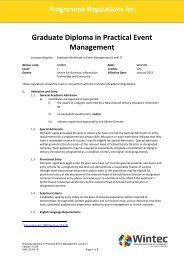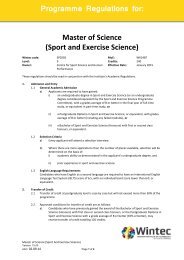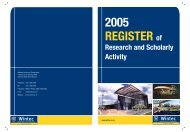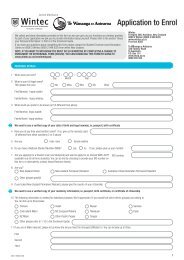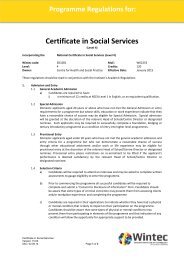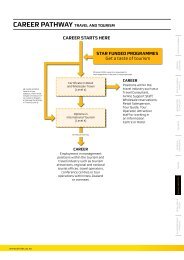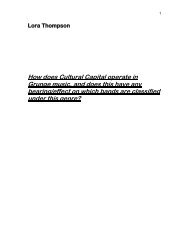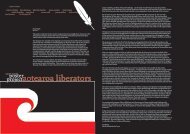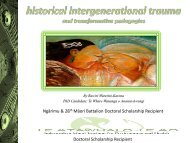Nursing Handover Research Project - Wintec Research Archive
Nursing Handover Research Project - Wintec Research Archive
Nursing Handover Research Project - Wintec Research Archive
Create successful ePaper yourself
Turn your PDF publications into a flip-book with our unique Google optimized e-Paper software.
handover in particular timing, structure and content. Radka (2003) looked at handover with a<br />
focus on the nurses’ and consumers’ voice within the process where the main construct was<br />
the ‘importance of knowing’. According to Radka this knowing extended to the patient in the<br />
form of communication, continuity and competence in relation to patient care and the nurse.<br />
Rowe (2001) completed an ethnography of the nursing handover within a large New Zealand<br />
base hospital which showed handover is still relevant to practice today. Rowe constructed<br />
handover as having other functions for nurses apart from handing over patient care such as<br />
communication, education and socialisation.<br />
Background<br />
The formal part of handover is transferring patient care and responsibility from one nurse to<br />
another thus enabling the nurse to deliver safe and ultimately quality nursing care. <strong>Handover</strong><br />
is described as “the transfer of professional responsibility and accountability for some or all<br />
aspects of care for a patient, or group of patients, to another person or professional group on a<br />
temporary or permanent basis” (Australian Commission on Safety and Quality in Healthcare<br />
[ACSQHC], 2009, p.6). Language is used to communicate patient information, but this is not<br />
its only function. With language there come other consequences. One such consequence is<br />
the ability of language to connect the nurse, the group and the institution (Gee, 2005; Walsh,<br />
Jordan & Apolloni, 2009). The institution and nurse create handover but conversely handover<br />
creates the nurse and the institution. <strong>Handover</strong> is both constructed and constructive (Potter &<br />
Wetherell, 1987).<br />
However there is a common language used in handover which transports meaning from nurse<br />
to nurse. It offers the nurses shared meaning. “Language works for communication because it<br />
is a vehicle for meaning” (Taylor, 2001, p.6). Nurses are influenced by past experiences and<br />
already established morals, ideals and values. The language that nurses use is shaped by each<br />
nurse, group and institution. For an outsider to the group it could be difficult to follow as<br />
nurses have been immersed in the process creating a special dialogue between them. New<br />
language is always being created and it is crucial to mention that language is not clear or<br />
impartial but in fact constitutive (Potter & Wetherell, 1987; Taylor).<br />
There are many methods of formal nursing handover including verbal, tape recorded, beside<br />
handover and written (Fenton, 2006; O’Connell, Kelly & MacDonald, 2008; Scovell, 2010;<br />
3



